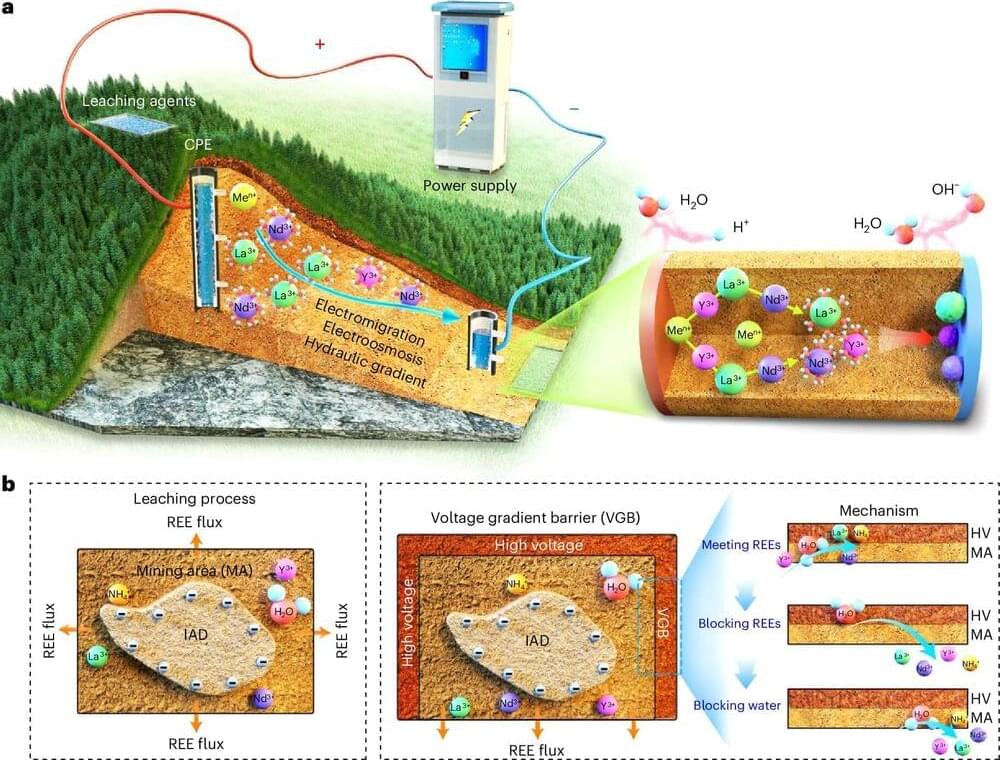Jan 10, 2025
Electrokinetic rare earth mining technique gets upscaled to industrial levels
Posted by Genevieve Klien in categories: chemistry, computing, mobile phones
A team of metallurgists and geochemists at Guangzhou Institute of Geochemistry, working with a mechanical engineer from the Chinese Academy of Sciences, has improved their previous electrokinetic mining technique by scaling it up to industrial levels. In their paper published in Nature Sustainability, the group describes the changes they made to their system, and the results of testing they conducted at a mine.
Modern technology is reliant on multiple rare earth elements —they are used in EVs, smartphones and computers, for example. Unfortunately, mining such elements is extremely environmentally unfriendly. Huge machines are used to dig dirt and rock from large mines, where it is mixed with water and a host of toxic chemicals in order to extract the desired elements.
The process produces thousands of metric tons of toxic waste. The team in China has been working for several years to develop a cleaner way to extract the elements. It involves generating an electric field underground that coaxes the desired elements closer together and concentrates them, making for a much easier and cleaner separation process.

















